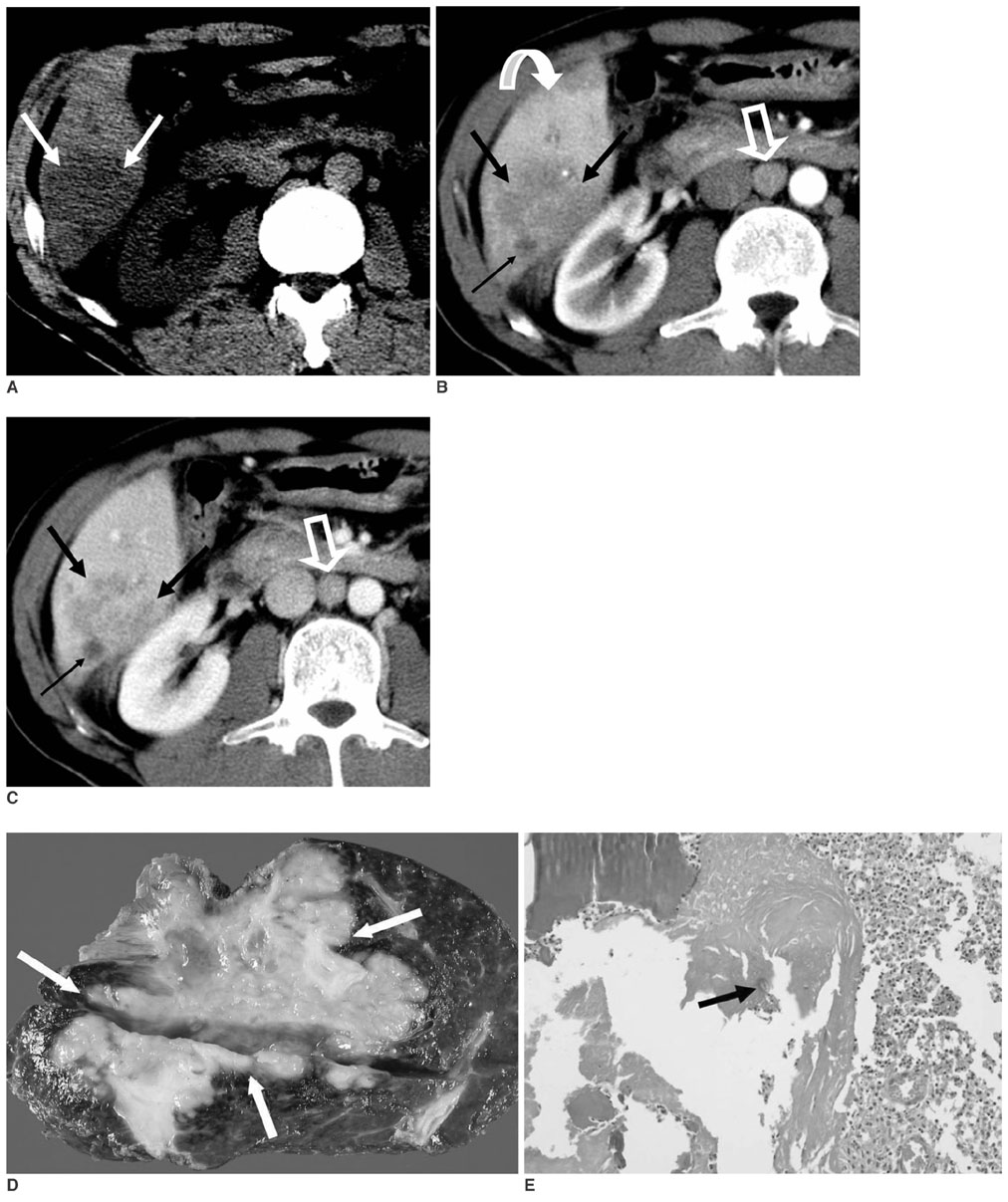Korean J Radiol.
2007 Feb;8(1):70-73. 10.3348/kjr.2007.8.1.70.
Hepatic Parasitic Abscess Caused by Clonorchiasis: Unusual CT Findings of Clonorchiasis
- Affiliations
-
- 1Department of Radiology and Research Institute of Radiology, University of Ulsan College of Medicine, Asan Medical Center, Seoul, Korea. jhbyun@amc.seoul.kr
- 2Department of Pathology, University of Ulsan College of Medicine, Asan Medical Center, Seoul, Korea.
- KMID: 753868
- DOI: http://doi.org/10.3348/kjr.2007.8.1.70
Abstract
- Clonorchiasis is caused by a chronic infestation of liver flukes, Clonorchis sinensis, and these reside mainly in the medium- and small-sized intrahepatic bile ducts. Therefore, diffuse, uniform, minimal or mild dilatation of these bile ducts, particularly in the periphery, without dilatation of the extrahepatic bile duct is the typical finding on several imaging modalities. We report here on the CT findings of an unusual case of hepatic parasitic abscess that was caused by clonorchiasis; this malady mimicked cholangiocarcinoma, and there was no dilatation of the intrahepatic bile ducts.
MeSH Terms
Figure
Reference
-
1. Rim HJ. The current pathobiology and chemotherapy of clonorchiasis. Korean J Parasitol. 1986. 24:7–20. [Korean].2. Lim JH. Radiologic findings of clonorchiasis. AJR Am J Roentgenol. 1990. 155:1001–1008.3. Choi BI, Kim HJ, Han MC, Do YS, Han MH, Lee SH. CT findings of clonorchiasis. AJR Am J Roentgenol. 1989. 152:281–284.4. Jeong YY, Kang HK, Kim JW, Yoon W, Chung TW, Ko SW. MR imaging findings of clonorchiasis. Korean J Radiol. 2004. 5:25–30.5. Kim YH. Extrahepatic cholangiocarcinoma associated with clonorchiasis: CT evaluation. Abdom Imaging. 2003. 28:68–71.6. Mirdha BR, Gulati S, Sarkar T, Samantray JC. Acute clonorchiasis in a child. Indian J Gastroenterol. 1988. 17:155.7. Seong NJ, Lee JM, Kim SH, Han JK, Kim YJ, Kim JH, et al. Differentiation between mass-forming type peripheral cholangiocarcinoma and hepatic abscesses: application of artificial neural networks to CT images. J Korean Radiol Soc. 2005. 53:343–352.
- Full Text Links
- Actions
-
Cited
- CITED
-
- Close
- Share
- Similar articles
-
- Ultrasonographic diagnosis of clonorchiasis
- A Case of Clonorchiasis with Focal Intrahepatic Duct Dilatation Mimicking an Intrahepatic Cholangiocarcinoma
- ERCP Findings In Hepatic Clonorchiasis
- Long-lasting sonographic and histopathological findings in cured clonorchiasis of rabbits
- Imaging diagnosis of clonorchiasis


